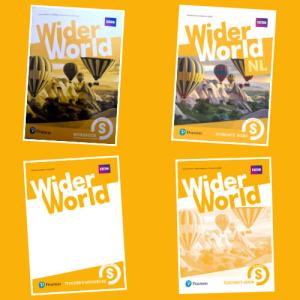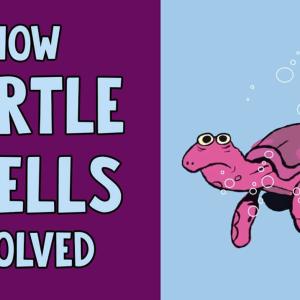
今天说一说动物爪子。世界上的很多动物都有爪子,它是自然界中用途最广泛的工具之一。熊使用爪子进行挖掘和防御,鹰的针状爪子可以刺穿猎物的头骨,甚至灵长类动物的祖先也曾使用这些令人印象深刻的附肢,直到后来它们的爪子演变成指甲。那么,是什么导致了这种适应性进化?
Consider the claw. Frequently found on four-limbed animals around the world, it’s one of nature’s most versatile tools. Bears use claws for digging as well as defense. An eagle’s needle-like talons can pierce the skulls of their prey. And lions can retract their massive claws for easy movement, before flicking them out to hunt. Even the ancestors of primates used to wield these impressive appendages, until their claws evolved into nails. So what in our evolutionary past led to this manicured adaptation, and what can nails do that their sharper cousins can’t? 文章源自:力哥爱英语(ienglish521.com)力哥爱英语-https://ienglish521.com/3003.html
今天我们来说说爪子。世界上的很多动物长着爪子,它是自然界中用途最广的工具之一。熊使用爪子进行挖掘和防御,鹰的针状爪子可刺穿猎物的头骨,狮子能收回爪子以方便活动,狩猎时再把爪子伸出。甚至灵长类动物的祖先也曾使用这些令人印象深刻的附肢,直到它们的爪子演变成指甲。那么,在我们过去的进化中,是什么造成整齐指甲的适应性进化,哪些事指甲能做到,而比它锋利的爪子却不行?文章源自:力哥爱英语(ienglish521.com)力哥爱英语-https://ienglish521.com/3003.html
When nails first appeared in the fossil record around 55.8 million years ago, claws had already been present for over 260 million years in the ancestors of mammals and reptiles. But despite the gulf of time between their emergence, these adaptations are both part of the same evolutionary story. Both nails and claws are made of keratin— a tough, fibrous protein also found in horns, scales, hooves and hair. This protein is produced by a wedge of tissue called the keratin matrix. Rich in blood vessels and nutrients, this protein factory produces an endless stream of keratin, which is tightly packed into cells called keratinocytes. These high-density cells give nails and claws their trademark toughness. 文章源自:力哥爱英语(ienglish521.com)力哥爱英语-https://ienglish521.com/3003.html
指甲首次出现于大约5580万年前的化石中,而哺乳动物和爬行动物的祖先长着爪子的记录已逾2.6亿年。尽管它们的出现时间相差很多,但是,这些适应性是同一进化过程的一部分。指甲和爪子都由角蛋白组成——角蛋白是一种坚韧的纤维蛋白,也存在于角、鳞片、蹄和头发中。称为“角蛋白基质”的组织层负责生产这种蛋白质,该蛋白工厂组织富含血管和营养,生产出源源不断的角蛋白流,紧紧塞满了角质细胞。正是这些高密度细胞,赋予了指甲和爪子坚韧特性。文章源自:力哥爱英语(ienglish521.com)力哥爱英语-https://ienglish521.com/3003.html
Since nails evolved from claws, both adaptations produce keratinocytes in the same way. The cells grow out from the matrix, emerging from the skin where they die and harden into a water-resistant sheath. The primary difference between the two keratin coverings is really just their shape, which depends on the shape of the bone at the end of the animal’s digits. In claws, the bed of keratinocytes conforms to a narrow finger bone, wrapping around the end of the digit and radiating outwards to form a cone-shaped structure. Animals with nails, on the other hand, have much broader digits, and keratinocytes only cover the top surface of their wide bones. 文章源自:力哥爱英语(ienglish521.com)力哥爱英语-https://ienglish521.com/3003.html
因指甲由爪子进化而来,所以,两种适应方式都以相同方式产生角质细胞。细胞从基质中长出来,露出皮肤即死亡,然后硬化成防水鞘。两种角蛋白覆盖物的主要区别实际上只是形状不同而已,取决于动物手指(脚趾)末端的骨骼形状。长爪子的动物,是因为角质细胞顺着狭窄指骨形成基底,进而环绕手指末端,并向外辐射而形成锥形结构。另一方面,长指甲的动物其手指(脚趾)要宽得多,角质细胞仅覆盖其宽骨的顶表面。文章源自:力哥爱英语(ienglish521.com)力哥爱英语-https://ienglish521.com/3003.html
It’s possible that nails have simply persisted as a side effect of primates evolving wider, more dexterous fingers. But given what we know about the habitats of our primate ancestors, it’s more likely that nails came with their own powerful advantages. 文章源自:力哥爱英语(ienglish521.com)力哥爱英语-https://ienglish521.com/3003.html
灵长类动物进化出更宽、更灵巧的手指后,指甲只是意外的收获。但是,鉴于我们对灵长类祖先栖息地的了解,指甲可能更有强大优势。文章源自:力哥爱英语(ienglish521.com)力哥爱英语-https://ienglish521.com/3003.html
High in the forest canopy where these primates lived, wide finger bones and expansive finger pads were ideal for gripping narrow branches. And nails improved that grip even further. By providing a rigid surface to press against, primates could splay out their pads to create even more contact with the trees. Additionally, nails improved the sensitivity of their digits by providing an extra surface to detect changes in pressure while climbing. This combination of sensitivity and dexterity gave our ancestors the precise motor control needed to snatch up insects, pinch berries and seeds, and keep a firm grip on slim branches. The evolution of nails and the evolution of opposable thumbs and toes are closely linked. And when our ancestors moved down from the trees, this flexible grasp enabled them to create and wield complex tools. 文章源自:力哥爱英语(ienglish521.com)力哥爱英语-https://ienglish521.com/3003.html
灵长类动物栖息于林冠高处,宽手指骨和宽阔的指垫非常适合抓紧细小树枝,指甲更增强了握持力。通过可以压靠的硬性表面(指甲),灵长类动物可张开指垫,增加与树木的接触面积。此外,它们在攀爬时,额外表面(指甲)能感知压力变化,从而提高了手指的敏感性。灵敏性和灵巧性的结合为我们的祖先提供了精确的运动控制能力,可捉昆虫、捏住浆果和种子,并牢牢抓住纤细的树枝。指甲的进化,与可对捏的拇指进化和脚趾的进化紧密相关。当我们的祖先从树上搬迁到陆地生活时,这种灵活的抓握能力使它们能制造和使用复杂工具。文章源自:力哥爱英语(ienglish521.com)力哥爱英语-https://ienglish521.com/3003.html
Even if it was possible for wide fingers to sport claws, their sharp points would’ve likely interfered with these primates’ regular tasks. Claws are ideal for piercing, puncturing, and hooking, but their points make grabbing difficult, and potentially dangerous. However, both claws and nails are used in some unexpected ways. Manatees use nails to grasp their food, and researchers think elephant toenails may sense vibrations in the ground to help them hear. Meanwhile, some primates, like the aye-ayes of Madagascar, have re-acquired claws. They use these extra-long appendages to tap branches and trunks, while listening for hollow sections with their bat-like ears. When they hear an opening, they burrow into the tree and skewer grubs with their needle-like middle finger. 文章源自:力哥爱英语(ienglish521.com)力哥爱英语-https://ienglish521.com/3003.html
即使宽手指也可以掌控爪子,但尖锐的爪尖可能会干扰这些灵长类动物的日常工作。爪子适合穿透、刺破和钩住东西,但爪尖使得抓取困难,并且有潜在危险。但是,爪子和指甲都有某些意想不到的使用方式。海牛用指甲抓住食物,研究人员认为,大象的脚趾甲或许能感知地面的震动,以帮助它们听见远处声音。同时,一些灵长类动物,例如马达加斯加指猴,又重新获得了爪子。它们用这些超长附肢敲打树枝和树干的同时,用蝙蝠状耳朵倾听,以寻找空心部位。当它们听到有空响时,就用爪子挖开并探入树中,然后用针状中指把幼虫串起来。文章源自:力哥爱英语(ienglish521.com)力哥爱英语-https://ienglish521.com/3003.html
We’ve only scratched the surface of all the incredible ways nails and claws are used throughout the animal kingdom. But as for which of these adaptations is better? That’s an answer we may never nail down. 文章源自:力哥爱英语(ienglish521.com)力哥爱英语-https://ienglish521.com/3003.html
关于动物界令人不可思议的指甲和爪子的使用方式,我们本次只做了表面了解,但至于哪一种适应进化更好,我们可能永远也无法得出答案。文章源自:力哥爱英语(ienglish521.com)力哥爱英语-https://ienglish521.com/3003.html















